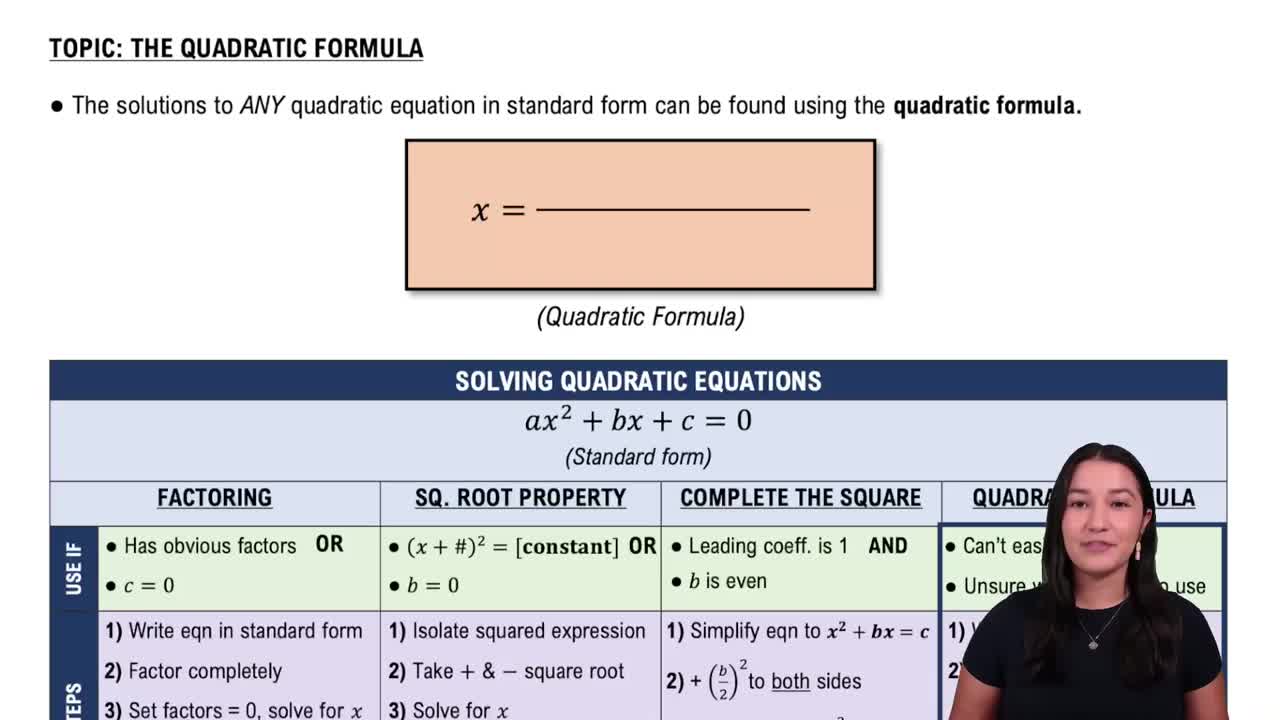Here are the essential concepts you must grasp in order to answer the question correctly.
Function Composition
Function composition involves combining two functions to create a new function. The notation (ƒg)(x) means to apply g first and then apply f to the result. This is calculated as ƒ(g(x)), where you substitute g(x) into the function f. Understanding this concept is crucial for solving problems that require evaluating the composition of functions.
Recommended video:
Evaluating Functions
Evaluating functions means finding the output of a function for a given input. For example, to evaluate g(-3), you substitute -3 into the function g(x) = -2x + 6. This process is essential for function composition, as you first need to evaluate the inner function before applying the outer function.
Recommended video:
Evaluating Composed Functions
Quadratic Functions
A quadratic function is a polynomial function of degree two, typically expressed in the form f(x) = ax^2 + bx + c. In this case, f(x) = x^2 + 3 is a quadratic function where a = 1, b = 0, and c = 3. Understanding the properties of quadratic functions, such as their shape (parabola) and vertex, is important when evaluating them in the context of function composition.
Recommended video:
Solving Quadratic Equations Using The Quadratic Formula
 Verified step by step guidance
Verified step by step guidance Verified Solution
Verified Solution



 4:56m
4:56m